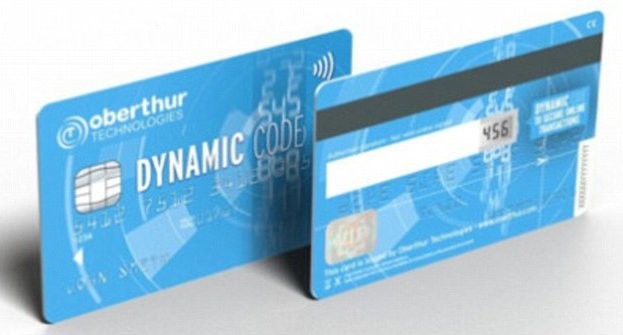
The credit card with a security code that constantly changes: New technology in a bid to combat fraud.
A credit card with a constantly changing security code is being launched in an attempt to combat fraud. The three numbers on the back of the card will be replaced by a digital display randomly generating a new combination every hour.
The digital security company Oberthur Technologies is talking to UK banks about introducing the innovation and has said the cards will be used by French customers by the end of the year. The security code on the back of most credit and debit cards is required to make payments online.
Fraud in the UK involving cards, remote banking and cheques totalled £755million in 2015, with more than 20,000 victims. The mini-screen on the new cards is powered by a small battery designed to last three years. Professor Alan Woodward, a cyber-security expert from Surrey University, said: ‘It’s surprising it has taken so long for this to appear. The technology has existed for some time so now it will be a case of persuading card processors that it is worth doing.’
He told the BBC: ‘It may be costly for card operators as some extra infrastructure will be required to ensure our cards stay synchronised with the operator, but it happens already for many banks with the dongles they issue for login [to online banking].’
One drawback of the card is that customers will no longer be able to memorise their security code and will need to check every time they want to make an online purchase. The French banks Societe Generale and Groupe BPCE are preparing to issue the cards to customers after a pilot scheme last year. They are also being tested in Mexico and Poland. In another development in digital security, MasterCard said this week that it has created technology that could allow online shoppers to send a ‘selfie’ of themselves to prove their identity when they make a purchase.
It would do away with the need for passwords used as an additional level of security to the three-digit code. But passwords can be difficult to remember, stolen or intercepted. MasterCard customers currently use a system called SecureCode to verify their identity while shopping online. The process can result in shoppers abandoning their purchase or having the transaction declined if they enter the password incorrectly.
The ‘selfie’ password system involves customers downloading an app to their mobile phone and registering by taking a photo of themselves so their face is stored in the system. To authorise a payment they look into the camera and must blink to verify they are not just holding up a photo of someone else. Customers will be able to use a scan of their fingerprint instead of a selfie if they prefer.